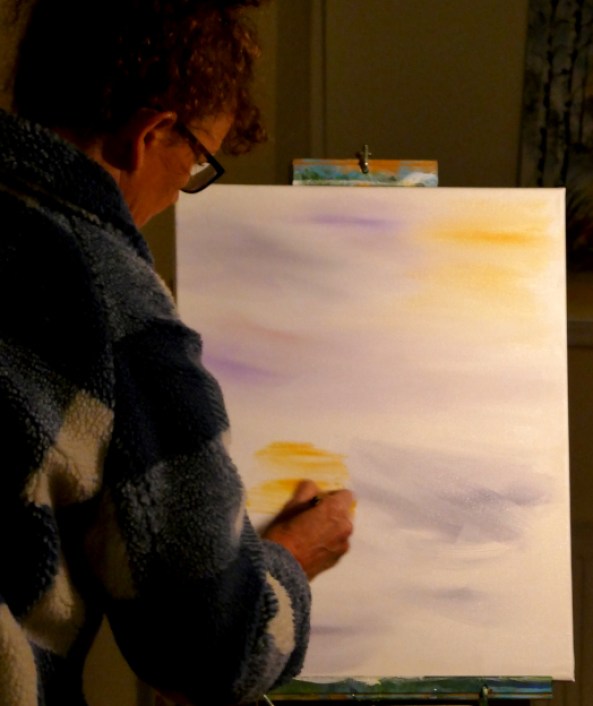Bruce Mulcahy came to Glasshouses from Teeside to demonstrate gouache painting for Pateley Bridge Art Club members and interested local people.
Although he paints in oils, acrylics and gouache, he prefers gouache for outdoor paintings as he can reduce the weight of materials he carries, he can work quicker and the painting dries for safe transport. If weather or light changes cause interuption to an outdoor session, the painting can easily be rewetted and recommenced.
He used 200 gsm slightly rough watercolour paper and thin stiff flat brushes.
For the demonstration he used an enlarged photograph of a garden.
Bruce gets his painting tray ready with his selection of gouache paint colours. He adds white gouache to each colour mix to make sure they are not transparent and can cover the painting surface well.
He sketches the outline of the main features in pencil.
Bruce started painting the darkest features first with a mix of Vandyke brown and blue. These colours create a very dark mix. He uses thin flat brushes, painting quickly. He does not look for precision as he can use refine lines with other lighter opaque colours later.
He continues with smaller dark features.
Bruce working from the photograph, his work is also projected onto a screen for the members.
Greys, greens and blues painted with the thin stiff brush.
Details being refined with lighter colours working towards white. He also uses darker colours where needed to refine details.
Bruce Mulcahy’s painting at the end of the demonstration.
Other incomplete paintings that he showed us to illustrate his range of subjects and styles.




























































































